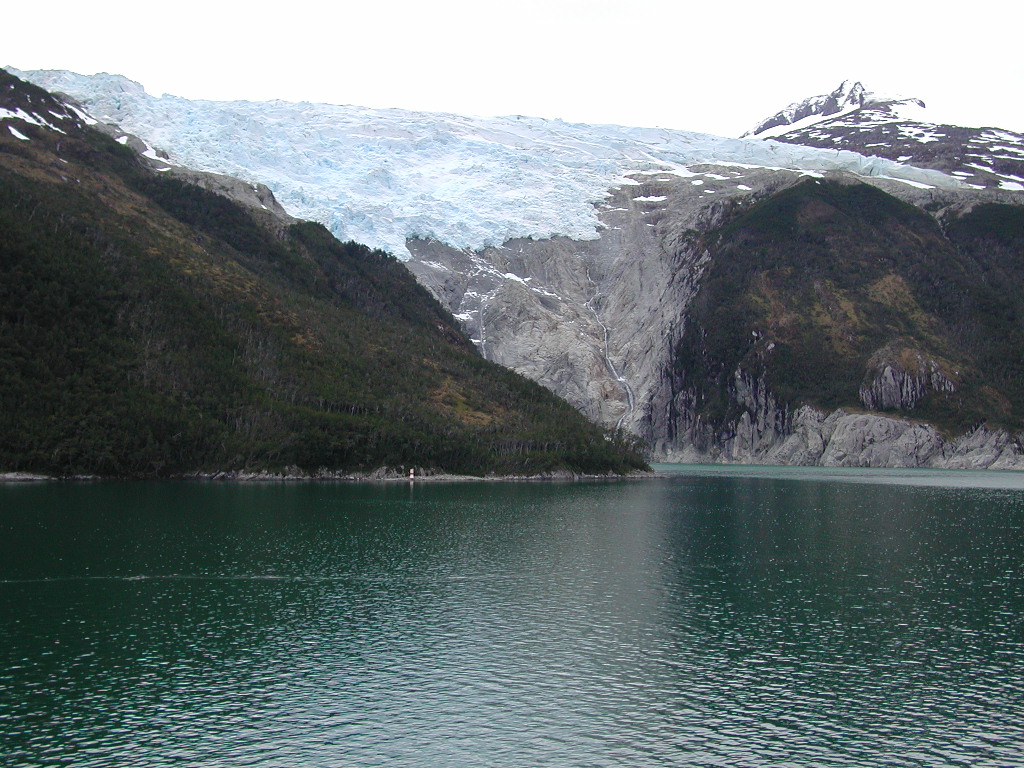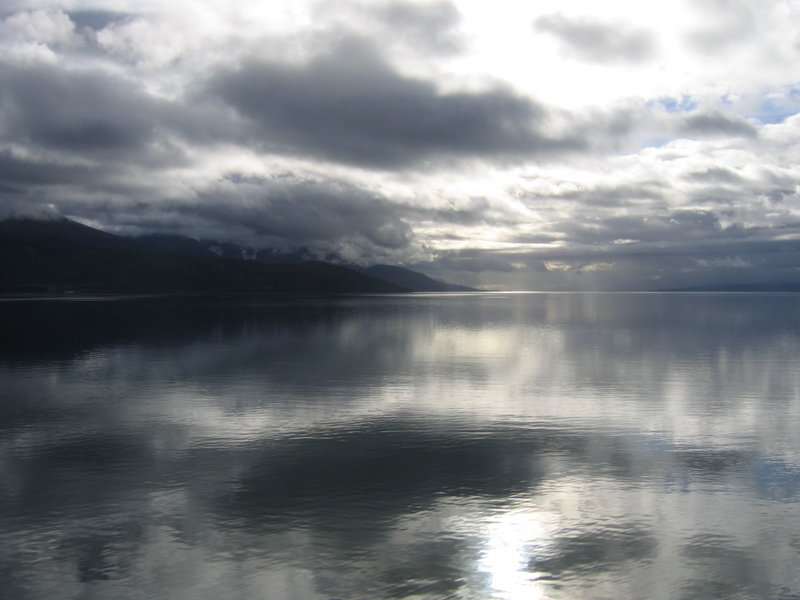
Are you ready for a treat? Have you ever wished you could be with Charles Darwin on his travels just for one day? Perhaps -- when he first saw immense glaciers? Well, I've arranged today to imagine what-and-where of him and the Beagle in South America. Charles Darwin enjoyed 29 January 1833 because his notes are joyful and eventful. See for yourself.
"In many parts, magnificent glaciers extend from the mountain side to the water's edge. It is scarcely possible to imagine anything more beautiful than the beryl-like blue of these glaciers, and especially as contrasted with the dead white of the upper expanse of snow. The fragments which had fallen from the glacier into the water were floating away, and the channel with its icebergs presented, for the space of a mile, a miniature likeness of the Polar Sea," wrote Charles Darwin of the Beagle Channel (Tierra del Fuego, Chile). [1]
The Beagle Channel is at the tip of the southern South America. A straght that separates islands of the Tierra del Fuego (the Land of Fire) Archipelago but extends about 150 miles (250 km) in length and 3 miles (5 km) in minimum width. Darwin is eager to show off his stuff so mentions beryl, not the common name "emerald" even though he knows of precious emeralds per tales of Cortez and his Spaniards. Darwin compares the scenery with icebergs and -- then questionable -- Polar Sea.

Courtesy of Wikipedia Commons
The view above of the Romanche Glacier on the north shore of the Channel was taken at 19:59 on 10 August 2005. Here is another view of the Beagle Channel but taken at 11:08 on 31 January 2006 to compare:

Courtesy of Wikipedia Commons
The boats being hauled on shore at our dinner-hour, we were admiring from the distance of half a mile a perpendicular cliff of ice, and were wishing that some more fragments would fall. At last, down came a mass with a roaring noise, and immediately we saw the smooth outline of a wave travelling towards us. The men ran down as quickly as they could to the boats; for the chance of their being dashed to pieces was evident. One of the seamen just caught hold of the bows, as the curling breaker reached it: he was knocked over and over, but not hurt, and the boats, though thrice lifted on high and let fall again, received no damage. This was most fortunate for us, for we were a hundred miles distant from the ship, and we should have been left without provisions or firearms. I had previously observed that some large fragments of rock on the beach had been lately displaced; but until seeing this wave I did not understand the cause. One side of the creek was formed by a spur of mica-slate; the head by a cliff of ice about forty feet high; and the other side by a promontory fifty feet high, built up of huge rounded fragments of granite and mica-slate, out of which old trees were growing. This promontory was evidently a moraine, heaped up at a period when the glacier had greater dimensions.
After the mishap? Our young man Charles wrote more:
When we reached the western mouth of this northern branch of the Beagle Channel, we sailed amongst many unknown desolate islands, and the weather was wretchedly bad. We met with no natives. The coast was almost everywhere so steep that we had several times to pull many miles before we could find space enough to pitch our two tents: one night we slept on large round boulders, with putrefying sea-weed between them; and when the tide rose, we had to get up and move our blanket-bags. The farthest point westward which we reached was Stewart Island, a distance of about one hundred and fifty miles from our ship. We returned into the Beagle Channel by the southern arm, and thence proceeded, with no adventure, back to Ponsonby Sound.
You ask, why is the title promising of milk and honey with salt and ice?
That refers to the icecream that Darwin could not make without milk and honey even though he had salt and ice. Enjoy yours!
Reference
[1] Charles Darwin, M.A., F.R.S., Journal of Researches into the Natural History and Geology of the countries visited during the voyage round the world of H.M.S. Beagle under the command of Captain Fitz Roy, London, England (1913) p.236





Comments